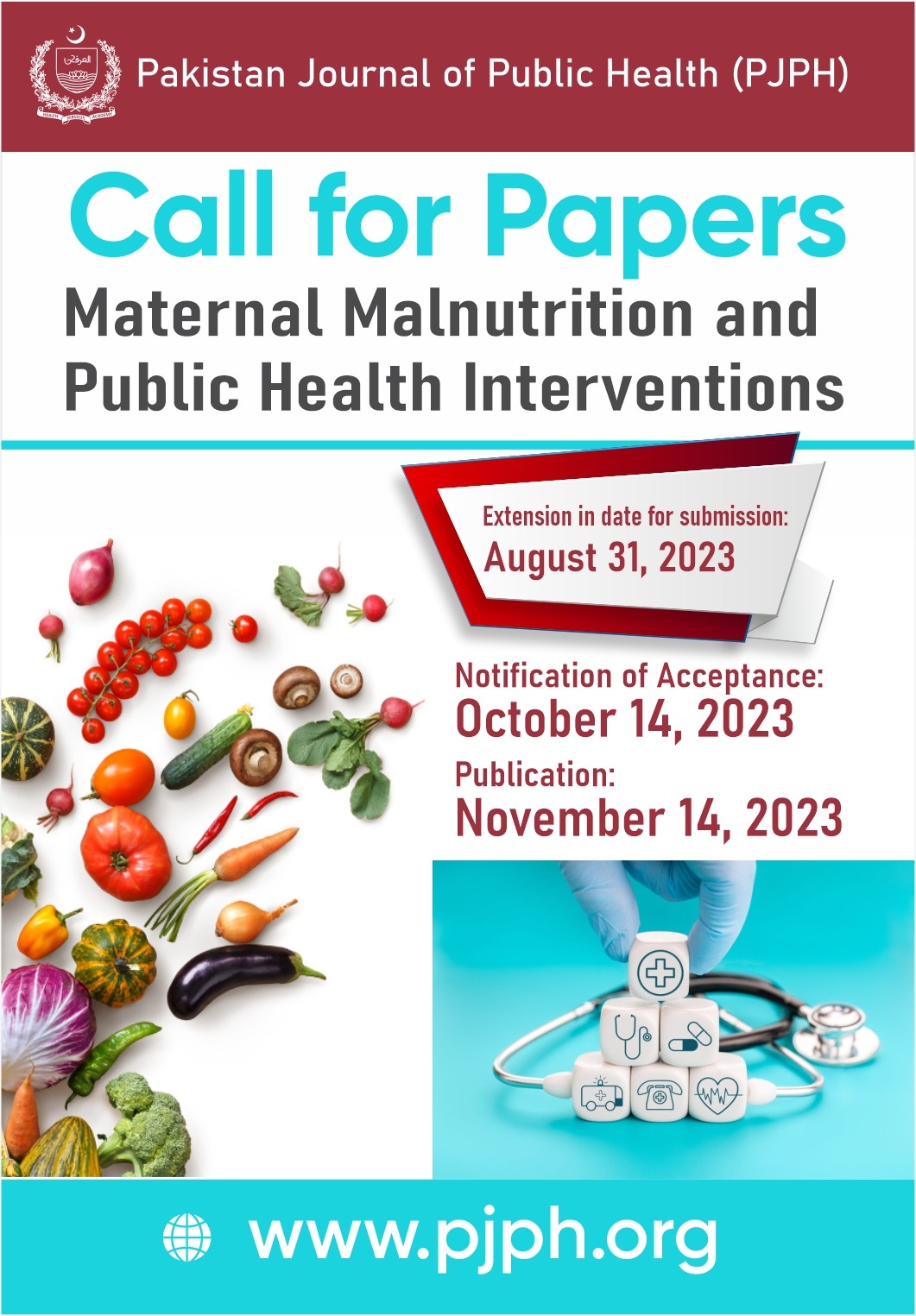Prevalence, impact, management practices and factors associated with dysmenorrhea among students of Akhtar Saeed Medical & Dental College Lahore
DOI:
https://doi.org/10.32413/pjph.v11i2.722Keywords:
Dysmenorrhea, impact, management, menstrual symptomsAbstract
Background: Dysmenorrhea is an important health issue of young adult females that badly affects their quality of life and academic performance. This study aimed to determine prevalence, impact, management practices and factors associated with dysmenorrhea among medical students.
Methods: This analytical cross-sectional study was conducted in Akhtar Saeed Medical & Dental College Lahore from August 2020 to December 2020. Using Cochran’s sample size calculator and rounding off, sample size of 400 female students was calculated. Convenience sampling technique was used. A self-constructed questionnaire was used which was designed after extensive literature search. Pain intensity was estimated using Visual Analogue Scale (VAS). Data were entered and analyzed in SPSS version 23. Chi square test was applied to find association between variables. A p-value of < 0.05 was considered statistically significant.
Results. Mean age of participants was 21.07 ± 2.58 years. Prevalence of dysmenorrhea was 79.5%. Statistically significant association was found between dysmenorrhea and participant’s age (p value=0.002), marital status(p value=0.001), family income(p value=<0.001), age of menarche (p value=<0.001), days of bleeding (p value=0.009) and regularity of cycle(p value=<0.001). Mostly participants used combinations of remedies. Rest was the most commonly used remedy to relieve pain. Impact of dysmenorrhea included social withdrawal, inability to prepare for exam, difficulty in carrying out daily activities and absence from college.
Conclusion. Prevalence of dysmenorrhea was 79.5%. Statistically significant association was found between dysmenorrhea and participant age, marital status, family income, age of menarche, days of bleeding and regularity of cycle. Alone or together, taking rest was the most commonly used remedy to relieve pain. Dysmenorrhea negatively affected quality of life.
Downloads
Published
Issue
Section
License
Copyright (c) 2021 Pakistan Journal of Public Health

This work is licensed under a Creative Commons Attribution-NonCommercial 4.0 International License.






